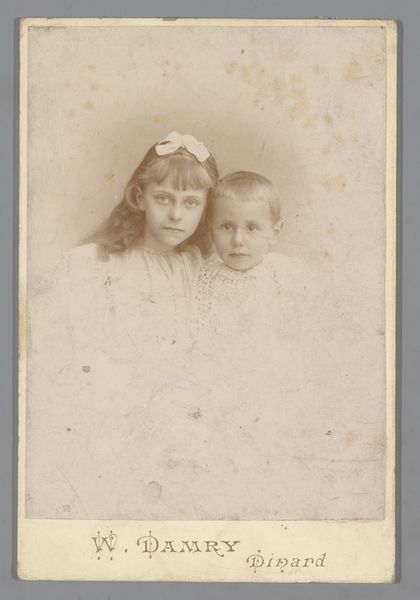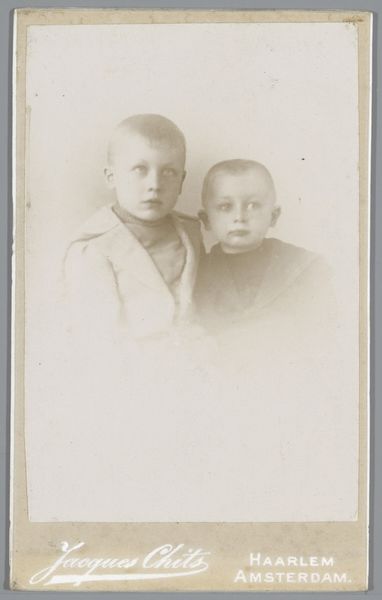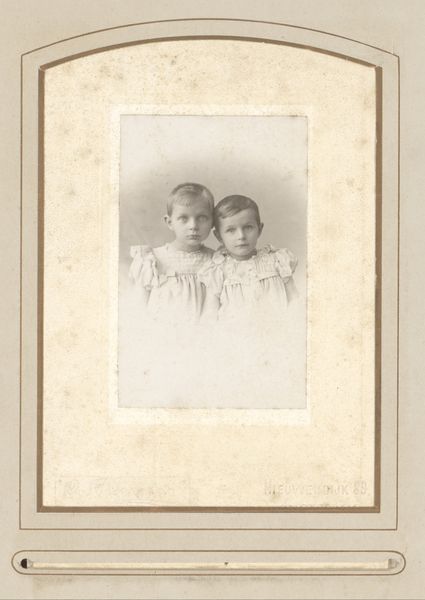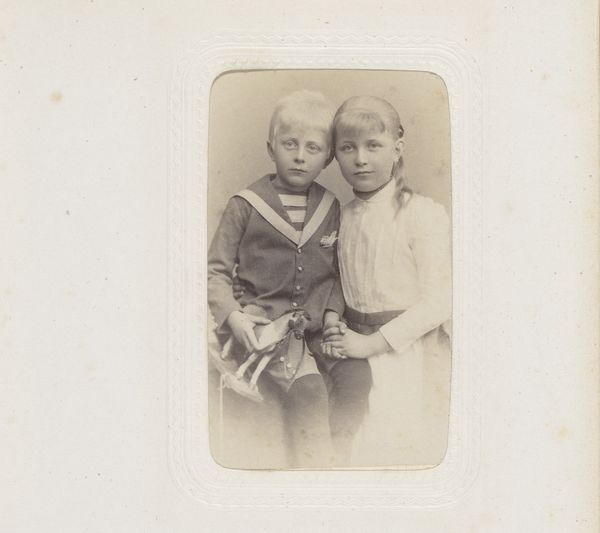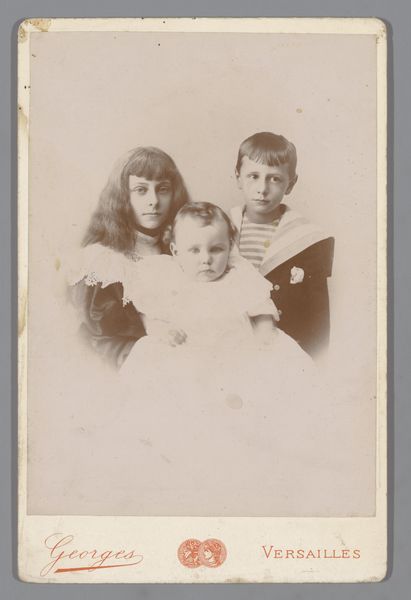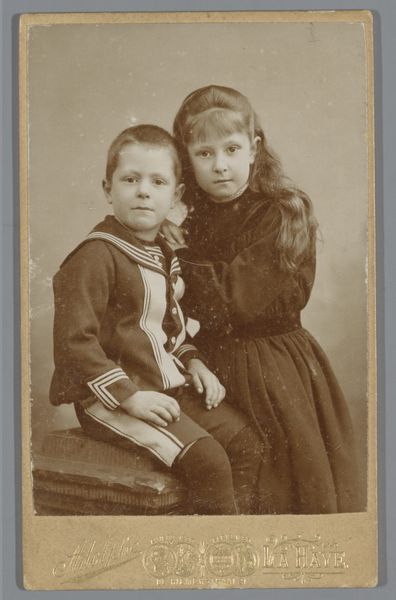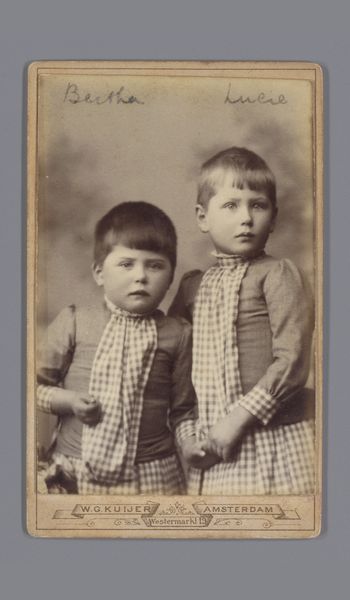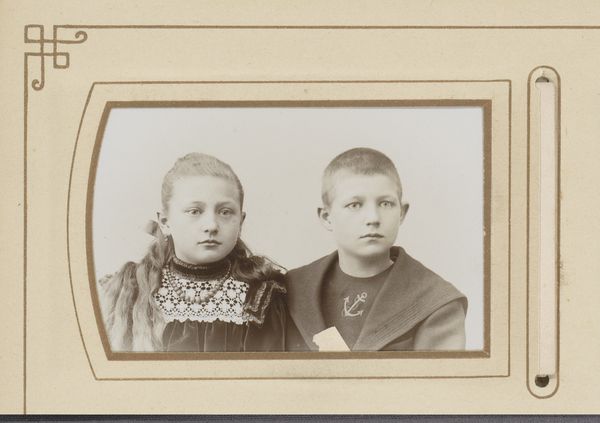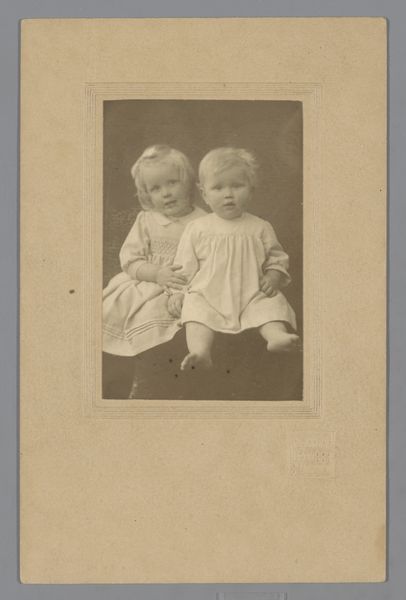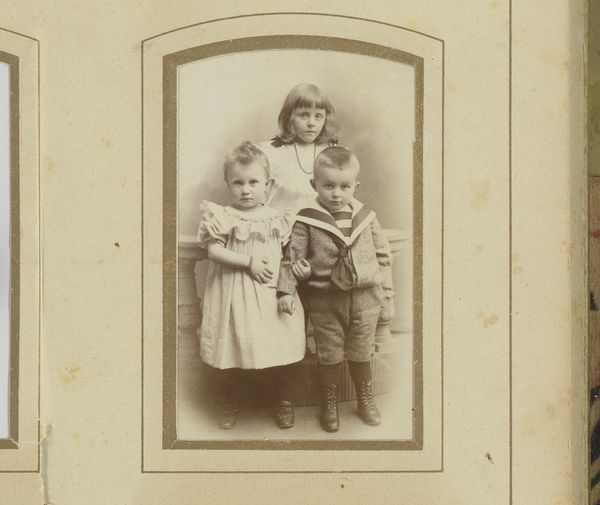
print, photography
#
portrait
# print
#
photography
#
group-portraits
Dimensions: height 104 mm, width 63 mm
Copyright: Rijks Museum: Open Domain
Curator: Here we have "Portret van twee kinderen," a photographic print dating back to around 1890 by Henri Paul Emile de la Roche Busé. Editor: It has a dreamlike quality. Their stares feel weighty, like they hold knowledge beyond their years, almost like miniature adults trapped in childhood. Curator: That feeling, I suspect, has a lot to do with photographic practices of the late 19th century. Sitters were asked to hold incredibly still for long exposure times, often resulting in a serious, almost vacant expression. Children were expected to behave in a certain manner, still a recent innovation since views of childhood as uniquely innocent, rather than small, not-yet-productive adults, began solidifying only in the 18th century. Editor: I notice they are dressed almost identically, these formal, naval-style outfits suggesting a shared social status. Curator: Yes, those outfits speak to the rise of a middle class with disposable income, carefully constructed visual cues to convey respectability. Group portraits, especially of children, became fashionable among families who could afford professional photography. Think about how the circulation of these images shaped broader cultural perceptions of childhood and family. These types of images also begin circulating, being viewed across a nation. The idea of what it meant to be Dutch shifted over time, to being viewed as more than merely regional identity, even expanding definitions of childhood, innocence, and national family ideals. Editor: It is striking how much their expressions remain relevant, those gazes speak across the years. I am wondering, who were they and how might they see themselves represented today, within our understanding of visual representation? I am interested in understanding, are the notions of childhood they might possess akin to how we conceive of children today? What would they feel about us looking back? Curator: I suppose, the historical layers and contextual readings remind us that while their emotions might resonate, we must tread carefully when imposing modern ideas. They participated in specific socio-political and aesthetic practices, it is a useful window into the shaping of familial identity, ideas that continue to hold influence in present visual representations. Editor: Definitely, a visual record like this provides such insight when carefully investigated. Curator: Indeed. Every photographic decision and historical factor allows us new awareness of past attitudes.
Comments
No comments
Be the first to comment and join the conversation on the ultimate creative platform.
